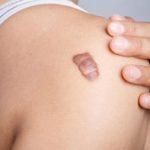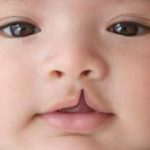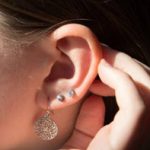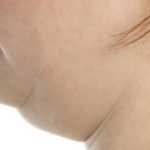What is Brow Bone Reduction?
Brow bone reduction is one of the facial plastic surgery applications. This process aims to reduce the size of the brow bone (forehead bone). Specialists usually perform this procedure for reasons such as the forehead bone being too prominent, disrupting facial symmetry, or having an undesirable appearance. You will recover within a few days after this procedure, and your results are usually permanent.
The prominence of the brow bone increases the facial intensity, reducing your face’s elegance and making a face appear masculine, especially for some women. One of the indicators of eyebrow protrusion is swelling in the upper eyelid. Although there are other causes of upper eyelid swelling that a doctor can diagnose, specialists may also combine this surgery with a brow lift.
If you have much puffiness on your upper eyelid, or if you’re from a group of people whose face looks sad and angry, or if you have a rough beginning and feel a bulge in the area above your eyebrow, you’re probably among those who need brow bone correction. If you are from a group of people with a large face and have much swelling in the area above the eyelid, and this swelling hasn’t improved as much as you would like with the eyelid surgery you have had, you may have a bone protrusion on your eyelid.
A person’s forehead makes up almost 40% of the facial surface area. This condition aesthetically controls and affects all other facial features. Therefore, your entire face shape will be affected if it becomes unbalanced. As a result, you may feel that your forehead is too large or prominent. This causes a drooping effect on the eyes. In general, the shape of the forehead can be asymmetrical and appear too masculine or feminine for your gender identity. It may also be disproportionate to all other facial factors.
In trans women, the brow bone reduction procedure corrects the facial contour. This gives it a feminist flexibility that is more in line with the way the eyebrow relates to other features aesthetically. The operation also reshapes the fragile bones in the forehead and orbit. This reduces the bony prominence around the overly protruding forehead. Remodeling and shrinking the forehead bone tend to release the skin, transforming and feminizing the upper facial region.
 HOW IS BROW BONE REDUCTION DONE AND HOW MANY TYPES OF IT ARE THERE?
HOW IS BROW BONE REDUCTION DONE AND HOW MANY TYPES OF IT ARE THERE?
There are four types of brow bone reduction procedures, each of which depends on the degree of prominence of the brow bone, the thickness of the frontal sinus wall, and the size of your frontal sinus and forehead in general.
Type 1 brow bone reduction – Shaving
Some patients may have a very small sinus with a thick frontal sinus wall. In this case, the excess amount of bone can just be burred away. This condition is called a ‘type I forehead’, and this procedure is referred to as ‘feminizing the forehead’. Many surgeons today can perform only this procedure, but only a small percentage of patients end up with good result with this technique.
Type 2 brow bone reduction – Shaving and Filling
This procedure is done properly when the projection angle between the nose and the forehead is already satisfying. In this case, the surgeon tend to treat only the concavity behind the bossing by filling the concave area above the bossing with bone cement.
Type 3 brow bone reduction — Forehead reconstruction
This procedure, which is performed the most, is called ‘type III forehead’ procedure. During this procedure, the anterior wall of the frontal sinus bone is removed, remodeled, and returned to its perfect place.
Type 4 brow bone reduction — Forehead reconstruction and Filling
Sometimes, reconstruction is not enough. In such cases, it is necessary to use a combination of forehead reconstruction and some filling with bone cement as required to get the desired forehead slope.
 Who are the Ideal Candidates for the Brow Bone Reduction Procedure?
Who are the Ideal Candidates for the Brow Bone Reduction Procedure?
The upper part of the face has the most significant impact on the attractiveness of the face. The purpose of reducing the bone around the eyebrow is to contour the bone above the eye so that the eye socket appears smaller. This surgery usually combines with eyebrow and forehead lift. People with swelling or unevenness in the forehead and around the eyes and those with larger eye sockets are ideal candidates for brow bone reduction.
The main difference between male and female foreheads is that males usually have a bony ridge on the upper edge of their eye sockets, which we call the brow or forehead ridge. Some women may also have less protrusion on their foreheads. In some people, there may be a flat area between the two brows and the bows of the two eye sockets. Bony prominences cause this on both sides of the eyebrow and under the brows. Because of the prominent brows, the angle between the forehead and the nose is sharper in men. We see brow protrusion less in women, and when we look from the side, the forehead has a more upright appearance. A wider angle between the nose and forehead creates more beauty for women.
If you are a generally healthy adult who believes that your forehead and brows spoil your appearance, you are an excellent candidate for brow bone reduction. In general, check out the ideal candidates for brow bone reduction :
- Adults
- Those who want to change their masculine features and take on a feminine look
- Excessively protruding brows or forehead that make you look more masculine
- Those with rough surfaces or protruding regional bones on their forehead
- Those with limp brow tails due to sunken or crooked eye sockets or protruding brow ridges
- Those who need facial reconstruction surgery
What is the Brow Bone Reduction Risks?
The brow bone reduction procedure is one of the most critical plastic surgery applications and has some risks. Check out the brow bone reduction risks in general:
- Pain and swelling: Post-operative pain and swelling are normal and usually go away within a few days.
- Bleeding: This problem may occur during and after surgery, albeit very rarely. However, this risk is usually small.
- Infection: As with any surgical procedure, there is a risk of infection. However, this risk is also shallow, and in case of a possible problem, our surgeon can quickly treat this problem.
- Healing problems: Some patients may experience problems during the healing process. However, this also occurs very rarely.
- Results outside of expectations: Some patients may complain that the surgery results are outside their expectations.
In addition, side effects such as taste disturbance, painful sensitivity, redness, and prolongation of the healing period may be present in the post-operative period. That’s why it’s essential to talk to your doctor before having surgery and understand all the risks and side effects.
How to Prepare for Brow Bone Reduction Procedure?
Preparing for surgical procedures directly affects the results and increases your chances of success. Preparation for brow bone reduction surgery in Turkey may include the following steps:
- Check your health: The doctor will collect the information necessary to prevent reactions that may occur in your general health, especially in the face area. The doctor will explain your reasons for using this treatment, goals, and your expectations.
- Learn the surgery details: Your doctor will give you information about how the surgery will perform, recovery time, and risks. You will also receive information about what to do before and after the surgery.
- Quit smoking and alcohol: It is essential not to smoke and drink alcohol before and after surgery because these substances can negatively affect healing.
- Discontinue medications: Your doctor may tell you to stop taking some medicines before surgery.
These preparation steps may vary within your doctor’s specific instructions and may differ for each patient. That’s why you must talk to your doctor and follow their instructions.




























